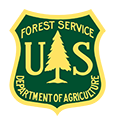Completion of Workshop on Human-Carbon Interactions in Urban Systems
See the final publications and recommendations catalyzed by this workshop.
As the first attempt at building and socializing an interdisciplinary research community of social and natural scientists in urban-carbon interactions, the US Carbon Cycle Science Program and Carbon Cycle Interagency Working Group (CCIWG) sponsored a workshop on Human-Carbon Interactions in Urban Systems from October 16-18, 2013 at the National Center for Atmospheric Research (NCAR) in Boulder Colorado. This article summarizes the rationale of and outcomes from this activity.
Workshop on Human-Carbon Interactions in Urban Systems
October 16-18, 2013, NCAR, Boulder Colorado
Paty Romero-Lankao, Karen Seto, Kevin Gurney
- Edited by Gyami Shrestha
Urban areas alone account for between 60 and 80 percent of global energy consumption and carbon emissions (GEA, 2012). The majority of scientific research on the urban carbon cycle has focused on quantification of flux at the whole-city level or subsets of the urban landscape (e.g., individual economic sectors) but with little process or mechanistic linkages to economic, behavioral or political drivers. Furthermore, little research has linked an understanding of the urban carbon cycle with land use and land use change surrounding urban areas or land use, form, and structure within urban areas. There is much knowledge and research on socioeconomic activity within urban areas, but this work has either not focused on carbon, or has not “connected” with the explicit space/time needs required by research in carbon cycle science where linkage to space/time explicit atmospheric measurements and land transformation is essential.
The US Carbon Cycle Science Plan has included considerable emphasis on the human dimensions of the carbon cycle and 3 of the 6 key goals within the Plan refer to aspects of human-carbon interactions. For example the Plan seeks to “understand and quantify the socioeconomic drivers of carbon emissions” (Goal 2); “determine the likelihood of success and the potential for side effects of carbon management pathways that might be undertaken to achieve a low-carbon future” (Goal 5); and “address decision maker needs for current and future carbon cycle information; and provide data and projections that are relevant, credible, and legitimate for their decisions” (Goal 6).
The accomplishment of these goals will require new research aimed at a better understanding of how humans interact with the carbon cycle and a new research community focused on human-carbon interactions. However, to date, there has not been a focused effort within the US carbon cycle science community to bridge the gap between the natural and social sciences and begin the necessary knowledge integration and community socialization. As a dominant and complex anthropogenic system, urban areas and their linkages to surrounding land use and land use change, provide an opportunity for carbon science to begin building the necessary research community to bridge the natural and social sciences through focus on a rich but tractable domain.
To begin the process of bridging the gap between the natural and social sciences on human-carbon interactions in cities, as the first attempt at building and socializing an interdisciplinary research community of social and natural scientists, the US Carbon Cycle Science Program and Carbon Cycle Interagency Working Group (CCIWG) sponsored a workshop on Human-Carbon Interactions in Urban Systems from October 16-18, 2013 at the National Center for Atmospheric Research (NCAR) in Boulder Colorado. Conceptualized, organized, and led by three members of the Carbon Cycle Interagency Working Group (CCSSG) – Paty Romero-Lankao (NCAR), Karen Seto (Yale) and Kevin Gurney (ASU) – this 2.5 days long event provided an opportunity for 22 US and scientists from the US, Canada and Mexico to brainstorm on urban systems and their surrounding land transformation as a rich subset of the broader human-carbon interactions.
Through a series of breakout group discussions, interspersed with comprehensive workshop sessions, the participants delved into the gaps, problems, solutions, and opportunities that need to be tackled in order to encourage and establish a truly integrated Program and/or Research Solicitation addressing human-carbon interactions in urban systems. Utilizing the output from this workshop, the workshop participants will work on a series of peer-reviewed papers in the next couple of months, culminating in a final document that will be published and shared for consideration and examination by the US and international research funding entities.
Workshop participants
Larry Baker (University of Minnesota), Mikhail Chester (Arizona State University), Riley Duren (JPL/NASA), Jim Ehleringer (U of Utah), Johannes Feddema (University of Kansas), Greg Frost (University of Colorado), NancyGrimm (ASU), Sara Hughes (UCAR), Lucy Hutyra (Boston University), Chris Kennedy (University of Toronto), Libby Larson (NASA/AAAS Fellow) , Peter Marcotullio (Hunter College/CUNY) , Stephanie Pincetl (UCLA), Dan Runfola (NCAR), Landy Sanchez (College of Mexico), Gyami Shrestha (U.S. Carbon Cycle Science Program/UCAR , Kellie Stokes (Yale), Andrea Sarzynski (University of Delaware), Joshua Sperling (NCAR)
Workshop co-organizers
Paty Romero-Lankao (NCAR), Karen Seto, Kevin Gurney (Arizona State University)




